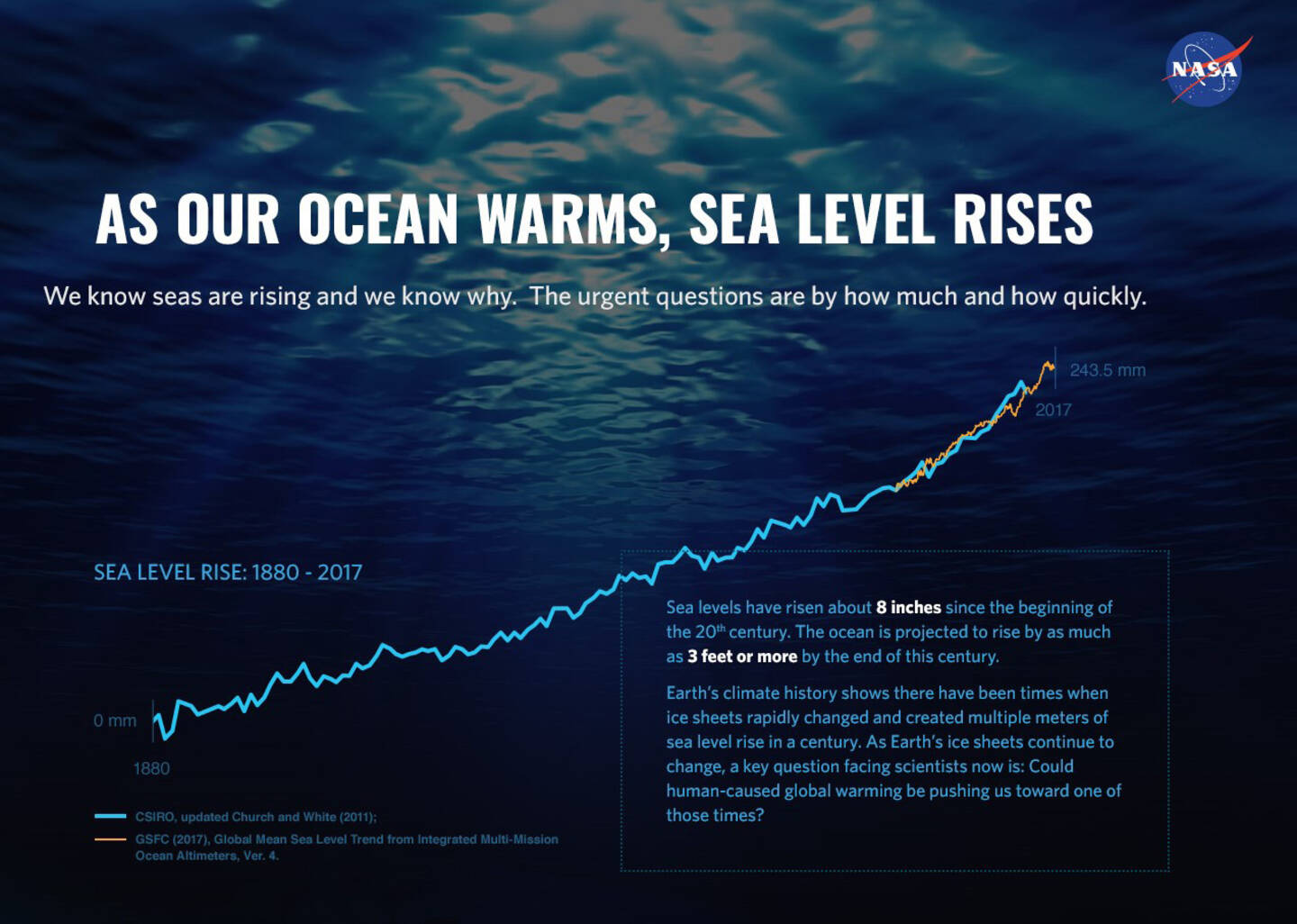
Information from Topex/Poseidon, Jason-1, Jason-2, and Jason-3 satellite missions, jointly managed by multiple agencies, including NASA, Centre national d’études spatiales (CNES), European Organisation for the Exploitation of Meteorological Satellites (EUMETSAT), the National Oceanic and Atmospheric Administration (NOAA), and NASA’s Jet Propulsion Laboratory in Pasadena, California. Edited from writing by Katie Weeman, Cooperative Institute for Research in Environmental Sciences, and Patrick Lynch, NASA’s Goddard Flight Space Center. Edited by Sara Blumberg.
Global sea-level rise has been accelerating in recent decades rather than increasing steadily, according to a new study based on twenty-five years of NASA and European satellite data. Scientists believe this acceleration, driven mainly by increased melting in Greenland and Antarctica, has the potential to double the total sea-level rise projected by 2100. If the rate of ocean rise continues to change at this pace, the sea level will rise 65 centimeters (26 inches) by 2100—enough to cause significant problems for the many coastal cities on our planet. February 13, 2018.
